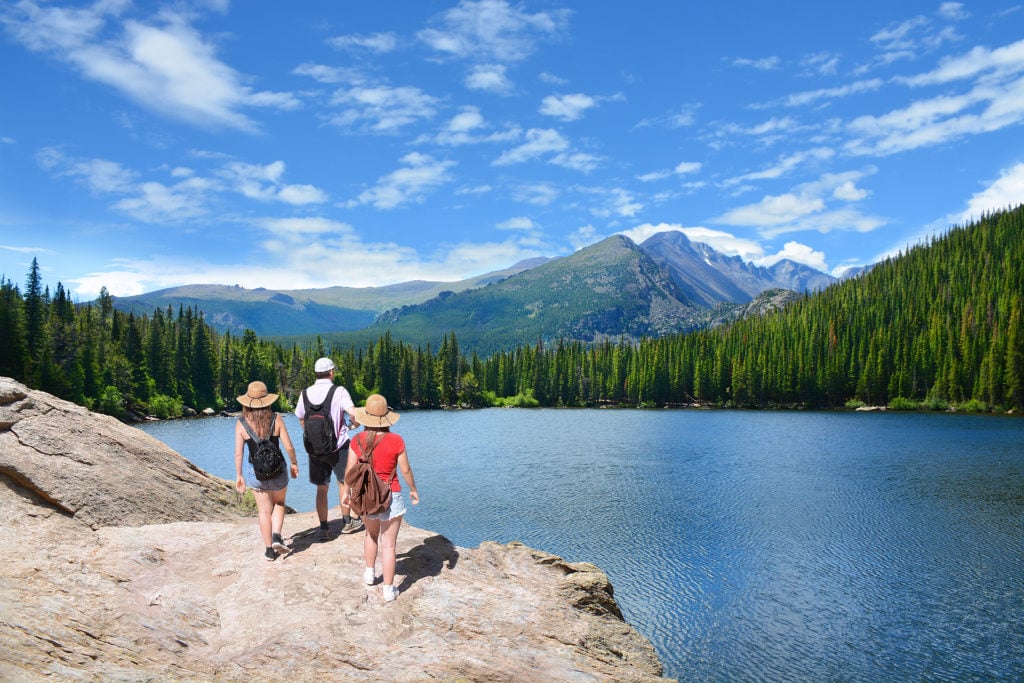Skin Care While Living in Colorado

The climate in Colorado can pose some interesting challenges for looking after your skin. With elevations at least a mile above sea level, over 300 days of sunshine, big seasonal swings in temperature, and large day-to-night changes, it is no wonder that your skin can feel weathered in this dry environment.
Despite the challenging climate, there is no doubt that embracing the outdoors is one of the most refreshing things about living in Colorado. Access to such a diverse range of landscapes makes it the perfect place to camp, mountain bike, climb, ski, or whitewater raft down one of our magnificent alpine rivers. However, the healthy and active lifestyle in Colorado can have a significant effect on your skin.
How does the Climate affect Your Skin?
Whether it is hot and humid or cold and dry, the weather can have a huge impact on your skin. Hot sunny weather can increase the risk of sunburn, heat rash, breakouts, and dryness. More importantly, radiation from the sun can damage your skin leading to premature aging, loss of elasticity, and an increased risk of skin cancer.
The cold weather poses many of the same problems. Low humidity leads to dryness, and low temperatures and high winds strip moisture from the skin too. It can lead to skin becoming dry, raw, and cracked. The sun cannot be ignored in the winter, either. Combining the winter sun with snow glare can seriously damage your skin.
With such a dramatic climate to consider in Colorado, it is vital to take care of your skin. These skin care tips will ensure you can enjoy your outdoor activities without having to worry about your skin.
Top Tips to Care for your Skin in Colorado
1. Hydrate Yourself AND Your Skin.
There is very little humidity in Colorado due to both the elevation and the desert climate. Therefore, the most important thing to remember is to hydrate from both the inside and the outside.
Drinking water is the best way to ensure the largest organ in your body, your skin, gets hydrated. Drinking plenty of water increases your blood flow, which helps to even skin tone. It also increases your skin elasticity, reduces dehydration of the skin, maintains your skin’s pH balance, and helps prevent breakouts.
As well as ensuring that your skin is hydrated from the inside, it is important to hydrate from the outside by using a moisturizer. Moisturizing your skin daily helps hydrate your skin, reduces fine lines, maintains smoothness, and reduces any discomfort such as tightness, itching, or dryness.
2. Make Sunscreen a part of your Day.
It is no secret that UV rays from the sun are harmful to the skin and increase skin cancer risk. With the high elevations across Colorado, it puts your skin at greater risk of UV damage. To help protect your skin, use a broad-spectrum UVA and UVB sunscreen that is at least SPF 30 or higher every day. Make sure you reapply it regularly throughout the day, especially if you have been doing any activity that has made you sweat or has exposed your skin to water.
Using sunscreen is essential all year round, and don’t forget that snow glare can make the UV rays more powerful. Snow can reflect as much as 80% of UV radiation; therefore, it is just as important to wear sunscreen in the winter as in the summer.
3. Boost your Diet with Antioxidants.
Air pollution, cigarette smoke, chemicals, and UV rays all produce free radicals which damage your skin. Antioxidants destroy those free radicals and help to protect your skin from damage. Boost your diet with antioxidants by eating foods that are rich in carotenoids, tocopherols, and flavonoids, as well as vitamins A, C, D, and E, and omega 3.
Ensure your diet is balanced with lots of fruits and vegetables like spinach, broccoli, blueberries, avocados, and bell peppers. Fatty fish, like salmon, and eggs will provide you with good antioxidant omega 3 fats. And, if you are looking for something to drink, green tea is full of antioxidants and has been shown to improve the moisture and elasticity of the skin.
4. Adopt a Daily Skin Care Routine.
You may not have paid much attention to your skincare regimen before, but the Colorado climate is a significant reason to change that routine. Ensuring you find a suitable cleanser, toner, and moisturizer for your skin will help combat the dry climate’s adverse effects and protect your skin. Choose products that do not dry your skin or strip it of its natural oils, and use a serum or face mask for extra hydration. You may need to change your skincare routine as your skin adapts to the different seasons of the year. However, ensure that sunscreen is a part of your skincare routine all year round. Adopting a daily skincare routine soon becomes a habit, and it will quickly become part of your morning regimen that you don’t have to overthink.
5. If in doubt, see a professional.
If you are not sure where to start with a skincare regimen, what products to use, or have problems with your skin that you don’t know how to address, why not see a professional? A board-certified dermatologist can walk you through what skincare products will be best for your skin and can help you manage any skin concerns.
We welcome you to Summit Dermatology.
Looking after your skin is an integral part of maintaining your health. However, sometimes troubling spots, blemishes, lesions, or concerning moles can occur. At Summit Dermatology, we use our expertise to diagnose and treat skin conditions in all age groups. We offer complete skin cancer screenings, procedural dermatology, and treat a wide variety of skin disorders. We know very well how the Colorado climate can affect your skin. If you have any concerns about your skin, contact us today by filling in our online form here, or call us today!
